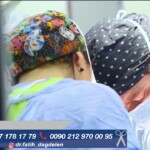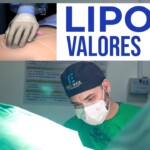Sensation-Preserving Mastectomy and Breast Reconstruction
The loss of sensation after traditional mastectomies and implant breast reconstruction is not widely spoken about, so women are often surprised to find out that they will probably have limited to no sensation or pain in their breasts afterward.
After Dr. Anne Peled was diagnosed with breast cancer at 37, she carefully weighed all of her options and opted for a lumpectomy rather than a mastectomy, in large part because of having to face the prospect of losing sensation if she opted for a mastectomy and implant reconstruction. As a result of this experience, she and her husband Dr. Ziv Peled (a peripheral nerve and plastic surgeon) began to discuss ways in which they could use their combined, highly specialized skill sets to preserve and restore sensation during mastectomies and implant breast reconstruction.
Anne has the unique dual training of breast cancer and plastic/reconstructive surgery, which has already enabled her to perform both the mastectomy and reconstruction in one surgery, with one surgeon, which is very rare. This combination has allowed the women she has operated on to wake up from breast cancer surgery with their reconstruction completed in nearly all cases.
Anne’s training, in combination with her husband’s training in peripheral nerve and plastic surgery, allowed them to be able to build upon Anne’s unique skill-set and design a collaborative approach where Ziv works to keep as many of the nerves to the breast skin as possible while Anne is performing the mastectomy and then uses nerve grafts to provide sensation to the nipples while Anne performs the implant reconstruction, therefore preserving sensation both in the breast skin and nipple.
What are the results?
• Dr. Anne and Dr. Ziv Peled are the first to publish data about this type of surgery. They have found that 90% of patients have sensation that is the same or better than before their surgery when using this innovative technique.
A sensation-preserving double mastectomy and implant reconstruction takes about three to four hours of surgery, with a one-night hospital stay; and most women can return to their daily lives and activities within 2 weeks, with complete recovery in four to six weeks.
Who is right for this type of procedure?
● Women who have either been diagnosed with breast cancer or are at high risk for future breast cancer and have elected for mastectomy and implant reconstruction.
Traditional Mastectomy and Breast Reconstruction.
• One of the most common operations performed for the treatment of breast cancer is a complete mastectomy, which involves the removal of all of the breast tissue.
• Mastectomy approaches have evolved over time and many women are now able to safely have nipple-sparing mastectomies in the hands of well-trained breast surgeons.
• After mastectomies, many women choose to have implant breast reconstruction, with outcomes where their breasts look the same, or even better than they did before their mastectomy.
• However, despite the significantly improved cosmetic outcomes in breast reconstruction with these techniques, most women don’t realize that they will have little if any, sensation in their breast skin or nipple skin after a mastectomy and implant reconstruction.
• Because of the way the nerves to the breast skin and nipple travel through the breast tissue, traditional mastectomies tend to cut through these nerves, which leads to breast and nipple numbness for many women, or even sometimes painful sensations at the cut nerve ends.
• The loss of sensation after traditional mastectomies and implant breast reconstruction is not widely spoken about, so women are often surprised to find out that they will probably have limited to no sensation or pain in their breasts afterward.
Source









